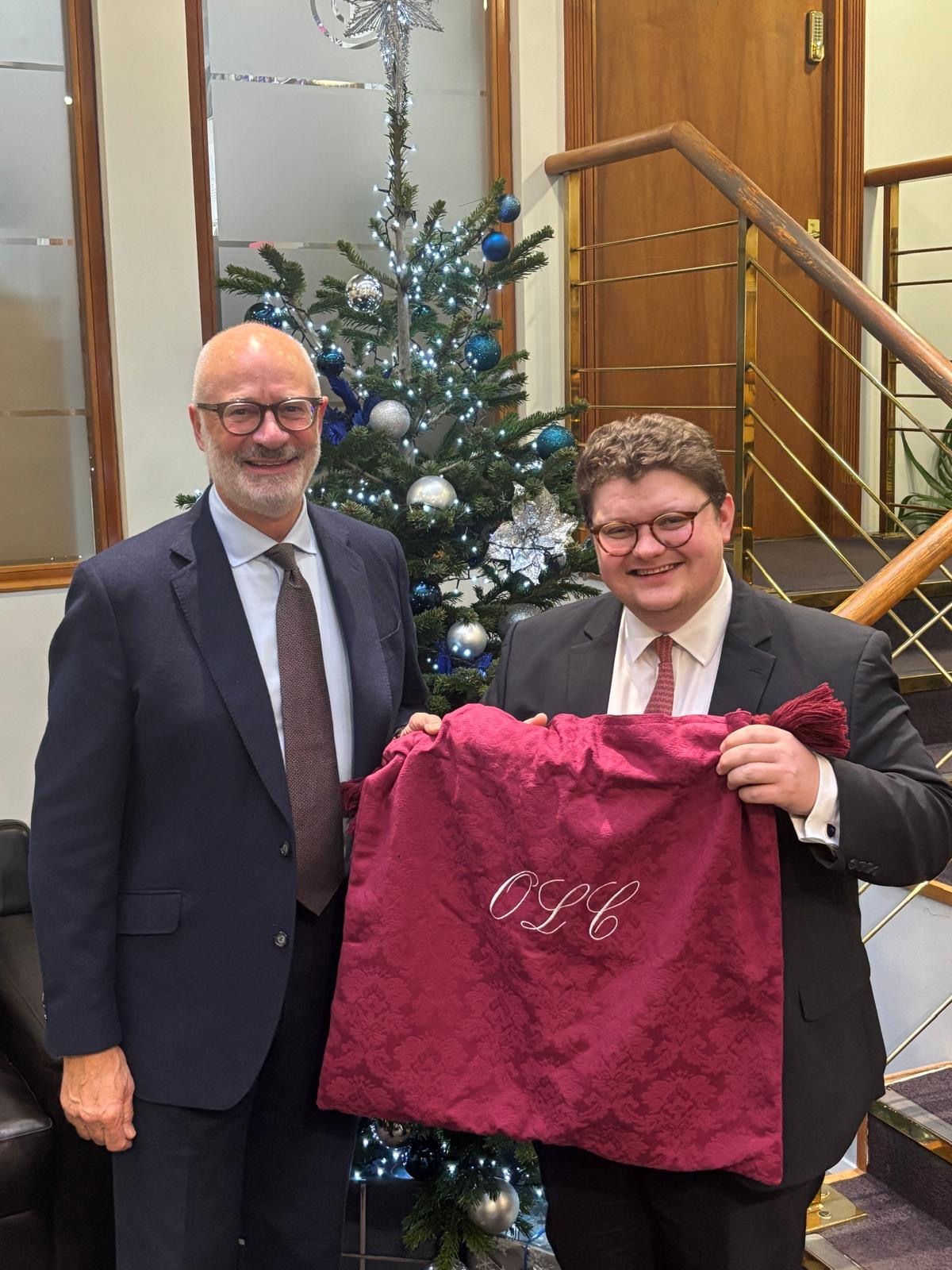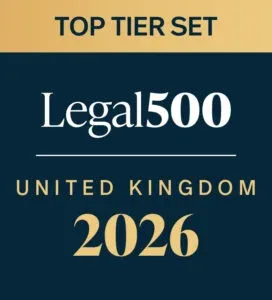Nick Fewtrell Successful in the Supreme Court for Barclays
Success in the Supreme Court for Barclays
On 1 April 2020 the Supreme Court handed down a landmark judgement in Barclays Bank v Various Claimants [2020] UKSC 13 examining what is known as ‘stage one’ of the test for vicarious liability, namely whether the relationship is one that is capable of giving rise to vicarious liability).
Barclays was represented by Lord Faulks QC, Nick Fewtrell and Katie Ayres, instructed by Keoghs LLP.
The Facts
The issue before the Court was whether Barclays was vicariously liable for the sexual assaults allegedly committed by the late Dr Gordon Bates between 1968 and 1984. The claim was brought as a group action on behalf of 126 claimants.
Applicants for jobs at Barclays who were successful at interview would be told that they would be offered a job, subject to passing a medical examination and obtaining satisfactory results in their GCE exams.
Dr Bates, who had died in 2009, was a GP who practiced in Newcastle-upon-Tyne. He had, what was referred to in evidence as, a ‘portfolio practice.’ Some of his time would be spent working as an employee in a local hospital. At other times he would carry out medical examinations for emigration purposes or for insurance companies, a mining company and a government board. He also wrote a newspaper column.
The medical examinations that Dr Bates conducted for Barclays were a comparatively minor part of his practice. The purpose of these examinations was to show that the applicants were medically fit for working in the Bank and could be recommended for life insurance at ordinary rates as required by the Bank’s pension scheme. The Bank arranged the appointments with Dr Bates, told the applicants when and where to go, and provided him with a pro forma report to be filled in. This was headed ‘Barclays Confidential Medical Report’ and signed by Dr Bates and the applicant. Dr Bates was paid a fee for each report. He was not paid a retainer by the Bank. Dr Bates was the primary doctor used by Barclays in the North East and was referred to as ‘the Bank’s doctor.’ The Claimants alleged that Dr Bates sexually assaulted them in the course of their pre-employment medical examinations.
The issue of whether Barclays was vicariously liable for the assaults was tried as a preliminary issue by Nicola Davies J who found in favour of the Claimants. This decision was upheld in the Court of Appeal. The lead judgement was given by Irwin LJ, with whom Sir Brian Leveson P and McCombe LJ agreed. Barclays appealed to the Supreme Court.
The Parties’ Submissions
Barclays argued that, although recent decisions had expanded the categories of relationship which can give rise to vicarious liability beyond a contract of employment, they had not expanded it so far as to destroy the trite proposition of law that the employer of an independent contractor is, in general, not liable for the negligence or other torts committed by the contractor in the course of the execution of the work.
The Claimants, conversely, argued that recent Supreme Court authority (Various Claimants v Catholic Child Welfare Society [2012] UKSC 56; [2013] 2 AC 1 (generally known as Christian Brothers), Cox v Ministry of Justice [2016] UKSC 10; [2016] AC 660 (‘Cox’), Armes v Nottinghamshire CC [2017] UKSC 60; [2018] AC 355 (‘Armes’)) called for a more nuanced approach to the question of vicarious liability involving a multifactorial analysis of various factors which determine in each case whether it is ‘fair, just and reasonable’ to impose liability. This approach would necessarily lead to the loss of the historic distinction between an employee and an independent contractor for the purposes of determining vicarious liability.
Lady Hale, who gives the unanimous judgement of the Court in Barclays, sat on all three of the Supreme Court cases relied upon by the Claimants. Lord Reed delivered the lead judgements in Cox and Armes, and Lord Kerr sat on Christian Brothers and Armes. It was safe to say that the Bench chosen to sit on Barclays was extremely well versed in the matters before them.
Discussion of the Case Law
Lady Hale at [10] to [27] provides a succinct and comprehensive summary of the development of the doctrine of vicarious liability since the decision in Lister v Hesley Hall Ltd [2001] UKHL 22; [2002] 1 AC 215 which first confirmed the ‘two stage’ enquiry for determining vicarious liability. The most influential decisions that she discusses are:
- E v English Province of Our Lady of Charity [2012] EWCA Civ 938; [2013] QB 722 at [12]-[13]. In E’s case the Court found that a bishop was in a sufficiently close relationship (‘akin to employment’) with the diocese for vicarious liability to arise. Lady Hale notes that Ward LJ did not question the traditional distinction between an employee and an independent contractor.
- Christian Brothers at [14]-[18]. This is the case upon which the Claimants’ argument ultimately rested. At [15], Lade Hale sets out the ‘five factors’ which Lord Phillips listed as ‘policy reasons’ for why it is usually fair, just and reasonable to impose vicarious liability on an employer for the torts committed by an employee. Lady Hale is critical of the tendency to elide these policy reasons with ‘the principles which should guide the development of that liability into relationships which are not employment…’ [16]. She goes on to say that these five factors are not ‘the only criteria by which to judge the question’ and what is required is a ‘searching enquiry’ looking at ‘the detailed features of the relationship’ [18].
- Cox at [20]-[22]. Although Lord Reed appears to have applied Lord Phillips’ five factors, whilst acknowledging that they were not all of equal significance, Lady Hale concluded that, ‘[i]t seems to me obvious that in Cox the result was bound to be the same whether it was expressed in terms of the [five factors test] or in terms of the “sufficiently akin to employment” test’ and that, ‘[t]here is nothing in Lord Reed’s judgement to cast doubt on the classic distinction between work done for an employer as part of the business of that employer and work done by an independent contractor as part of the business of that contractor’ [22].
- Armes at [23]. Lady Hale describes Armes as the ‘most difficult case.’ Although Lord Reed again appeared to apply the five factors test, importantly, he also concluded that ‘the foster parents…cannot be regarded as carrying on an independent business of their own’ (at paragraph [59]).
- Kafagi v JBW Group Ltd [2018] EWCA Civ 1157 at [25]. Kafagi was a Court of Appeal decision which appeared to contradict the Court of Appeal’s reasoning in Barclays. In Kafagi, Singh LJ stated that the development from employment to something ‘akin to employment’ had not undermined the conventional distinction between a contract of employment and a contract for services. Accordingly, the defendant company was not vicariously liable for the debt-collection work that it had sub-contracted to a self-employed bailiff.
- Ng Huat Seng v Mohammad [2017] SGCA 58 at [26]. Somewhat unusually, Lady Hale quotes extensively from this judgement of the Singapore Court of Appeal (their final court). This is likely to be because, although not ordinarily a jurisdiction which has historically provided authoritative guidance, the judgement sets out a succinct and complete summary of what was in essence Barclays’ case before the Supreme Court at paragraphs [63] and [64].
Conclusion
Having analysed these recent decisions, Lady Hale concludes that ‘[t]here is nothing…in the trilogy of Supreme Court cases…to suggest that the classic distinction between employment and relationships akin or analogous to employment…and the relationship with an independent contractor…has been eroded’ [24].
Paragraph [27] is of particular importance as it sets out the test to be applied in future cases for determining the ‘first stage’ of vicarious liability (my emphasis added):
‘The question therefore is, as it always has been, whether the tortfeasor is carrying on business on his own account or whether he is in a relationship akin to employment with the defendant. In doubtful cases, the five “incidents” identified by Lord Phillips may be helpful in identifying a relationship which is sufficiently analogous to employment to make it fair, just and reasonable to impose vicarious liability … But the key … will usually lie in understanding the details of the relationship. Where is it clear that the tortfeasor is carrying on his own independent business it is not necessary to consider the five incidents.’
When applying this test to Dr Bates’ situation it was clear that he was ‘in business on his own account as a medical practitioner with a portfolio of patients and clients. One of those clients was the Bank’ [28]. There was therefore no need to apply Lord Phillips’ five factors and no vicarious liability arose.
At paragraph [29], Lady Hale comments on workers in the ‘gig’ economy. Although she recognises it would be ‘tempting to align the law of vicarious liability with employment law’ it would be going ‘too far down the road to tidiness’ to do so. She does recognise, however, that asking the question of whether an individual is a particular type of ‘worker’ for the purposes of employment law, ‘may be helpful in identifying true independent contractors.’
Comment
The decision in Barclays provides welcome clarification to the law of vicarious liability. It provides a definitive ‘book-end’ to the expansionary decisions in Christian Brothers, Cox and Armes. The brevity and concision of the judgement itself indicates the common-sense and pragmatic approach to be taken in the future: if an individual or a company is carrying on a business on their own account (i.e. they are an independent contractor or acting under a contract for services) then no vicarious liability arises and that is the end of the enquiry. As Lady Hale states, this was, and always has been, the law.
It is only in ‘doubtful cases’ where recourse can, if necessary, be made to Lord Phillips’ five factors but even then event what is still required in such cases is a ‘searching enquiry’ looking at ‘the detailed features of the relationship’ and the five factors are not the only matters to consider. Doubtful cases are those such as examined in Christian Brothers, Cox and Armes and may include workers in the gig economy.

Also Recently
-
Festive Opening Hours 2025
The members and staff at Deans Court Chambers would like to wish our clients, colleagues and friends a very Merry…
Dec 09
-
Tim Horlock KC presents Oliver Carr with Red Bag
Tim Horlock KC presents Oliver Carr with Red BagThe red bag, used to carry the wig and gown, is traditionally…
Dec 05











